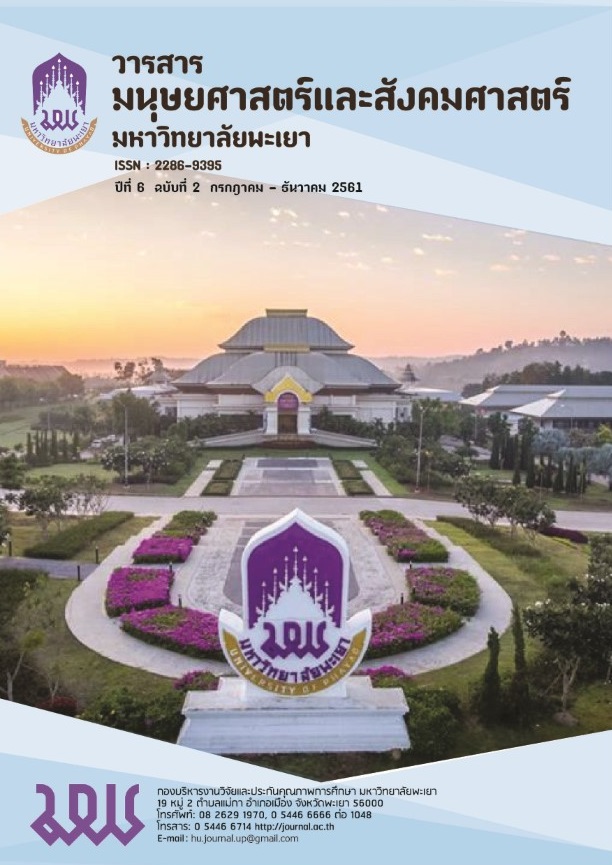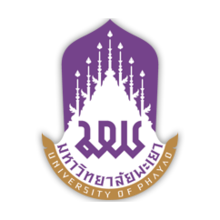The development a causal model of mathematics achievement of Mathayomsomboon Sueksa 7 students at Saithany the Vientiane capital of Lao people’s democratic republic: multiple group analysis
Keywords:
The factors influencing, Mathematics achievement, Multiple group analysisAbstract
The research were aimed 1) to develop and test the validation of the factor model influenced the mathematics achievement, 2) to test the invariance of model and parameter of the factor model influenced the students’ mathematics achievement of female and male students. The 400 samples of Mathayomsomboon sueksa 7 students in the second semester of the academic year 2016 were selected by multi-stage random sampling. The research tools consisted of mathematical achievement test, mathematical aptitude test and questionnaire. Validation test of the model and multiple group analysis were used. The research findings were as follows:
- The model was fit to the empirical data which the statistics checked for validity showed = 1.57, df = 4, p = 0.815, RMSEA = 0.00, CFI = 1.00, GFI = 1.00, AGFI = 0.96, /df = 0.39). The variables with direct effect were Mathematical background. The variables with direct and indirect effect were Academic leadership of school management, Parent’s carefulness, Math teacher’s quality of teaching and Achievement motivation. The variables with indirect effect were Mathematical aptitude and Attitude toward mathematics. They accounted for 92 percent of the total variance in mathematics achievement.
- The model of causal factors influenced the students’ mathematics achievement of female and male students were invariant on the model form and on other parameters of matrixes. Except, the parameters of the matrix of the causal influence from the exogenous observe variables on the endogenous observe variables were invariant between female and male students.
References
กระทรวงศึกษา และกีฬา. (2009). แผ่นพัฒนาการศึกษาปี 2000-2020. โรงพิมพ์ศึกษา.โครงการปรับปรุงการจัดการปกครองและคุ้มครองการศึกษา. (1996). การคุ้มครองโรงเรียนเวียงจันทน์. โรงพิมพ์ศึกษา.
ทิพสุคนธ์ วะจีประศรี. (2554). ปัจจัยที่มีอิทธิพลต่อผลสัมฤทธิ์ทางการเรียนวิชาคณิตศาสตร์ เรื่อง ภาคตัดกรวย ของนักเรียนชั้นมัธยมศึกษาปีที่ 4 สังกัดสำนักงานเขตพื้นที่ การศึกษาหนองคาย เขต 1. (วิทยานิพนธ์การศึกษามหาบัณฑิต) มหาวิทยาลัยมหาสารคาม.
ปรัชญากร ฮดมาลี. (2558). ปัจจัยเชิงสาเหตุที่มีอิทธิพลต่อผลสัมฤทธิ์ทางการเรียนวิชาคณิตศาสตร์ของนักเรียนชั้นประถมศึกษาปีที่ 6 สังกัดสำนักงานเขตพื้นที่การศึกษามัธยมศึกษาเขต 19: การวิเคราะห์เชิงสาเหตุพหุระดับ. (วิทยานิพนธ์ครุศาสตรมหาบัณฑิต) มหาวิทยาลัยราชภัฎเลย.
พิพัฒน์พงษ์ สมใจ .(2555). ปัจจัยที่ส่งผลต่อยุทธศาสตร์การเรียนรู้ของนักเรียนชั้นมัธยมศึกษา
ปีที่ 3 สังกัดสำนักงานเขตพื้นที่การศึกษาประถมศึกษาเลย โดยการวิเคราะห์พหุระดับ. (วิทยานิพนธ์ครุศาสตรมหาบัณฑิต) มหาวิทยาลัยราชภัฎเลย.
ไพวัน ดวงพะจัน. (2550). ปัจจัยเชิงสาเหตุที่มีอิทธิพลต่อผลสัมฤทธิ์ทางการเรียนของนักศึกษาชั้นปีที่ 1 มหาวิทยาลัยสุพานุวง สาธารณรัฐประชาธิปไตยประชาชนลาว. (วิทยานิพนธ์ครุศาสตรมหาบัณฑิต) มหาวิทยาลัยราชภัฎเลย.
ภาณุวัฒน์ สมนึก. (2558). โมเดลปัจจัยเชิงสาเหตุที่มีอิทธิพลต่อผลสัมฤทธิ์ทางการเรียนวิชาคณิตศาสตร์ของนักเรียนชั้นมัธยมศึกษาปีที่ 3 สังกัดสำนักงานเขตพื้นที่การศึกษาประถมศึกษากำแพงเพชร. วารสารมนุษยศาสตร์และสังคมศาสตร์ บัณฑิตวิทยาลัย มหาวิทยาลัยราชภัฎพิบูลสงคราม. 9(2): 5-66.
ราชันต์ ทิพยโสต. (2549). การวิเคราะห์ความสัมพันธ์โครงสร้างเชิงเส้นของปัจจัยที่มีอิทธิพลต่อผลสัมฤทธิ์ทางการเรียนวิชาคณิตศาสตร์นักเรียนชั้นมัธยมศึกษาปีที่ 3 กรณีศึกษาจังหวัดหนองคาย. (วิทยานิพนธ์ครุศาสตรมหาบัณฑิต) สถาบันเทคโนโลยีพระจอมเกล้าคุณทาหารลาดกระบัง.
ลัดสะหมี คุณพะจันสี. (2550). ปัจจัยที่ส่งผลต่อผลสัมฤทธิ์ทางการเรียนวิชาคณิตศาสตร์ ของนักเรียนชั้นมัธยมศึกษาปีที่ 4 ในโรงเรียน สังกัดแผนกศึกษาธิการและกีฬาแขวงหลวงพระบาง สาธารณรัฐประชาธิปไตยประชาชนลาว. (วิทยานิพนธ์ครุศาสตรมหาบัณฑิต) มหาวิทยาลัยราชภัฎเลย.
สมลวย สุติยไท. (2541). การพัฒนารูปแบบของผลการเรียนวิชาคณิตศาสตร์ชั้นมัธยมศึกษาปีที่ 3 ของสาธารณรัฐประชาธิปไตยประชาชนลาว. (วิทยานิพนธ์การศึกษามหาบัณฑิต) มหาวิทยาลัยมหาสารคาม.
สุพักตรา สำราญสุข. (2552). ปัจจัยที่มีอิทธิพลต่อผลสัมฤทธิ์ทางการเรียนวิชาคณิตศาสตร์ของนักเรียนชั้นมัธยมศึกษาปีที่ 3 ภาคตะวันออกเฉียงเหนือ. (วิทยานิพนธ์การศึกษามหาบัณฑิต) มหาวิทยาลัยมหาสารคาม.
สุภมาศ ถานโอภาส. (2555). ปัจจัยเชิงสาเหตุที่มีอิทธิพลต่อผลสัมฤทธิ์ทางการเรียนกลุ่มสาระการเรียนรู้คณิตศาสตร์ชั้นประถมศึกษาปีที่ 5 จังหวัดศรีสะเกษ. (วิทยานิพนธ์การศึกษามหาบัณฑิต) มหาวิทยาลัยมหาสารคาม.
Bloom, B.S. (1976). Human Characteristics and school learning. New York: McGraw – Hill (pp. 167-169).
Klausmeir, H.J. (1971). Learning and Human Abilities: Educational Psychology. New York: Harper & Brothers (pp. 28-29).
Downloads
Published
How to Cite
Issue
Section
License
ผู้นิพนธ์ต้องรับผิดชอบข้อความในบทนิพนธ์ของตน มหาวิทยาลัยพะเยาไม่จำเป็นต้องเห็นด้วยกับบทความที่ตีพิมพ์เสมอไป ผู้สนใจสามารถคัดลอก และนำไปใช้ได้ แต่จะต้องขออนุมัติเจ้าของ และได้รับการอนุมัติเป็นลายลักษณ์อักษรก่อน พร้อมกับมีการอ้างอิงและกล่าวคำขอบคุณให้ถูกต้องด้วย
The authors are themselves responsible for their contents. Signed articles may not always reflect the opinion of University of Phayao. The articles can be reproduced and reprinted, provided that permission is given by the authors and acknowledgement must be given.








